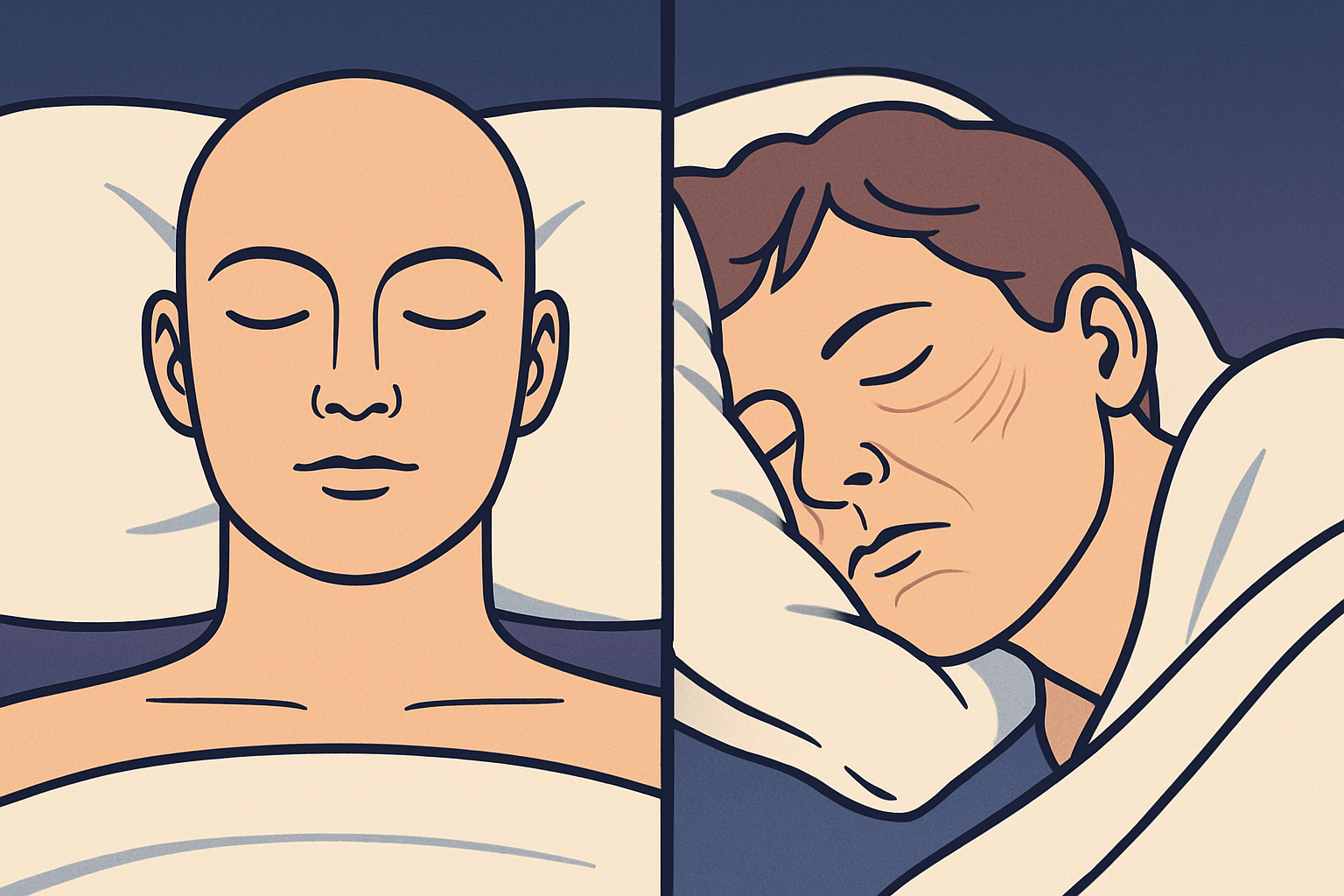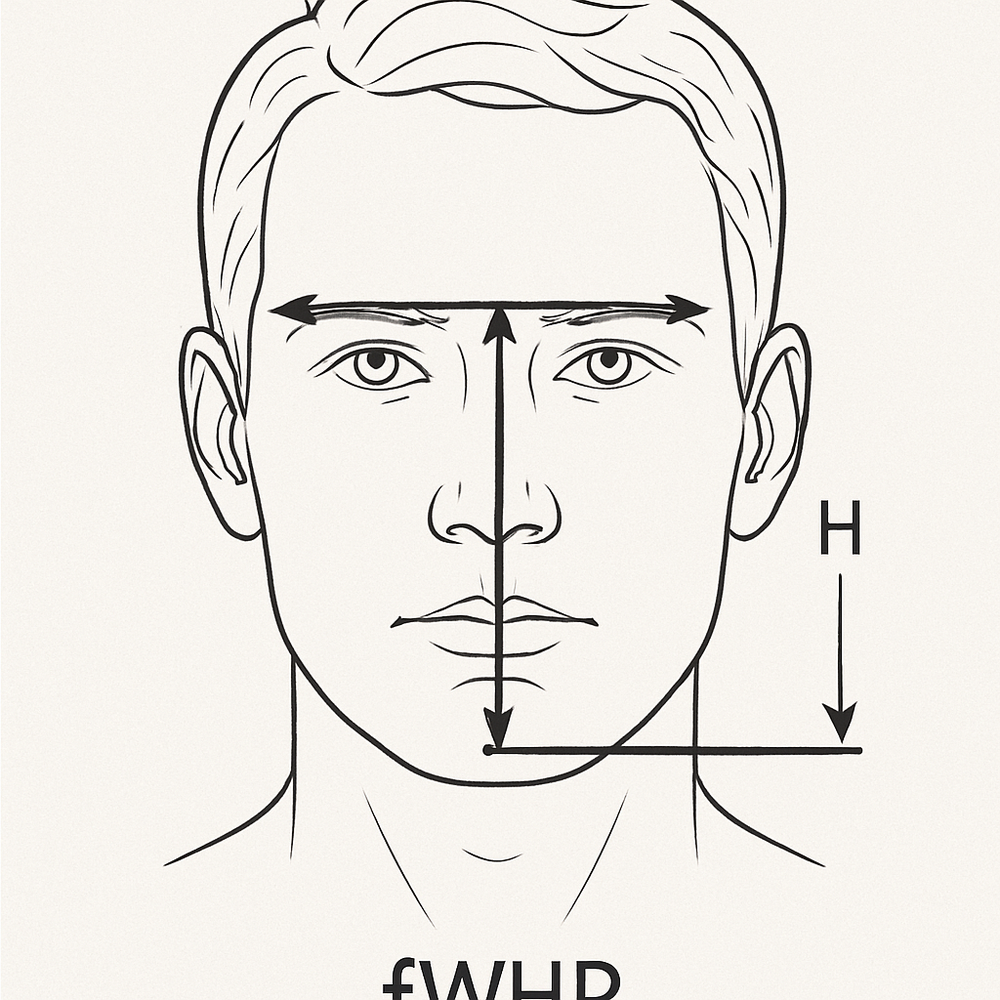- FIT FACE X // COMPLETE FACE GYM // 4 Face Sculpting Tools In The Box/ Now Anybody can Workout Their Facial Muscles With …
- JAW X // THE GYM FOR YOUR JAW// Target Your Jawline with Targeted Resistance Training, Get a Firmer, More Defined Facial…
- LIP X // THE GYM FOR YOUR LIPS// Our Lip Plumper That Really Works! Your Perfect Lip Pout Starts Here // Pro Videos Incl…
- Perfect Skin Care – The uniquely curved Arc massage head effortlessly glides along your face, helping to improve absorpt…
- 3 Modes and Heating – Our Doset Facial Massager offers 3 modes of operation, including vibration and heating, providing …
- Easy to Use – Specifically designed for women, our Face Massager is incredibly easy to use. Simply apply your preferred …
Facial bone mass plays a pivotal role in defining the structure and appearance of one’s face.
It provides the foundational framework that supports facial tissues, muscles, and skin, directly influencing both aesthetics and functionality.
Unlike other parts of the body where bone density is often discussed in the context of preventing osteoporosis or fractures, facial bone mass can impact how youthful and robust one’s facial features appear.
As we age, natural bone resorption occurs, leading to a gradual loss of bone density and volume.
This process can contribute to changes in facial contours, resulting in a more hollow and aged appearance.
Additionally, factors such as genetics, nutritional deficiencies, and certain medical conditions can exacerbate the decline in facial bone mass.
Therefore, maintaining or increasing bone mass in the face is not only crucial for a youthful appearance but also for overall health and well-being.
The benefits of healthy facial bone mass extend beyond aesthetics.
Strong facial bones provide better support to facial muscles, which can enhance their function and, in turn, improve expressions and chewing efficiency.
Furthermore, maintaining adequate bone density in the face can mitigate the risk of facial injuries and fractures, especially in the event of trauma.
Understanding the importance of facial bone mass sets the stage for exploring practical and effective strategies to enhance it.
By integrating specific lifestyle modifications, dietary adjustments, and targeted exercises, one can positively influence the bone density in their face.
The following sections will delve into these methods, providing a comprehensive guide to achieving and sustaining optimal facial bone health.

The Role of Nutrition in Bone Health
Maintaining and increasing bone mass in the face is intrinsically linked to a balanced diet rich in essential nutrients.
A diet that supports bone health must include key nutrients such as
calcium, vitamin D, and protein.
These nutrients play pivotal roles in ensuring the structural integrity and strength of facial bones.
Calcium is the primary mineral found in bones and is crucial for maintaining bone density.
Foods rich in calcium include dairy products like
milk, cheese, and yogurt.
For those who are lactose intolerant or prefer plant-based options, fortified plant milks, leafy green vegetables such as kale and broccoli, and almonds are excellent sources of calcium.
Vitamin D is another essential nutrient as it aids in the absorption of calcium and promotes bone growth.
Sunlight exposure is one of the primary sources of vitamin D.
however, dietary sources are also important.
Fatty fish such as salmon and mackerel, egg yolks, and fortified foods like cereals and orange juice can help ensure adequate vitamin D levels.
Protein is vital for the repair and maintenance of bone tissue.
Adequate protein intake can be achieved through both animal and plant-based sources.
Lean meats, poultry, fish, eggs, beans, lentils, and nuts are all excellent options.
It’s important to balance protein intake to support bone health without overconsumption, which can lead to other health issues.
Incorporating these nutrients into your daily diet can be straightforward with a few practical tips.
Start your day with a fortified cereal and milk or a yogurt parfait with fresh fruit and nuts.
Include a variety of vegetables in your meals, and opt for lean proteins like grilled chicken or tofu.
Snacking on almonds or preparing a smoothie with fortified plant milk and spinach can also boost your nutrient intake.
Paying attention to your diet and ensuring it is rich in these key nutrients will support the maintenance and increase of bone mass in your face, contributing to overall bone health.
Effective Exercises for Facial Bone Mass
Increasing bone mass in your face can be effectively achieved through targeted exercises that stimulate bone growth.
Resistance training and specific facial exercises are particularly beneficial for promoting bone health in this area.
Incorporating these exercises into your routine can help enhance facial structure and overall bone density.
Jawline Exercises
Jawline exercises are some of the most effective for improving bone mass in the face.
One simple exercise involves tilting your head back until you are looking at the ceiling, then moving your lower lip over your upper lip as far as possible.
Hold this position for 10 seconds and repeat the exercise 10 times.
Another effective exercise is the “chin lift,” where you push your lower jaw forward and then lift your chin upwards, holding the position for several seconds before releasing.
Facial Yoga
Facial yoga is another excellent method for stimulating facial bone growth.
The “Lion’s Pose” is particularly effective:
sit comfortably, inhale deeply through your nose, then open your mouth wide and stick your tongue out, stretching it downward as far as it will go while exhaling forcefully.
This exercise not only works the muscles but also stimulates circulation, promoting bone health.
Another useful facial yoga exercise is the “cheek lift,” where you smile as widely as you can and then lift your cheeks towards your eyes as high as possible, holding the position for 10 seconds and repeating multiple times.
Other Relevant Workouts
Additional exercises that can contribute to facial bone mass include the “fish face,” where you suck in your cheeks and lips as if trying to imitate a fish, holding the position for a few seconds before relaxing.
The “kiss the ceiling” exercise involves tilting your head back and attempting to kiss the ceiling, which works the muscles around the jaw and neck.
Both exercises help to stimulate the facial muscles and bones.
Incorporating these exercises into your daily routine can significantly impact your facial bone health.
Consistent practice will not only enhance your facial bone mass but also improve muscle tone and overall facial aesthetics.
Always ensure to perform these exercises correctly to avoid any strain or injury.
The Impact of Lifestyle Choices on Bone Density
Maintaining optimal bone density in the face is influenced significantly by lifestyle choices.
Smoking, for instance, is detrimental to bone health.
The toxins in cigarettes impede blood flow, reducing the supply of essential nutrients to the bones, thereby weakening bone structure over time.
Quitting smoking can lead to improvements in blood circulation and nutrient delivery, fostering healthier bone mass.
Consider seeking support through cessation programs or nicotine replacements to facilitate this vital change.
Alcohol consumption also poses a threat to bone density.
Excessive drinking can interfere with the body’s ability to absorb calcium, a crucial mineral for bone strength.
Reducing alcohol intake or switching to moderate consumption can mitigate these negative effects.
Prioritizing low-alcohol or non-alcoholic beverages can be an effective strategy, alongside incorporating more hydrating drinks like water and herbal teas, which support overall physical health.
Sleep patterns play an equally critical role in bone health.
Inadequate sleep disrupts the balance of hormones that regulate bone remodeling, potentially leading to decreased bone mass.
Aim for 7-9 hours of quality sleep per night to ensure your body has ample opportunity to repair and strengthen bone tissue.
Establishing a consistent sleep schedule, creating a restful environment, and limiting screen time before bed can enhance the quality of your rest.
Adopting healthier lifestyle habits is essential for maintaining and increasing bone mass in the face.
Alongside quitting smoking, moderating alcohol intake, and improving sleep hygiene, consider integrating a balanced diet rich in calcium and vitamin D, and engaging in regular physical activity.
These combined efforts can significantly support bone density, contributing to a stronger, healthier facial structure over time.
Supplements for Bone Health: Do They Work?
The importance of maintaining and increasing bone mass in the face cannot be overstated, particularly as it impacts both structural integrity and aesthetic appearance.
Various supplements are often recommended for bone health, with calcium, vitamin D, and collagen being among the most commonly cited.
Understanding their effectiveness, however, requires a closer look at scientific research and proper usage guidelines.
Calcium is a critical mineral for bone health, playing a significant role in bone density and strength.
Numerous studies have shown that adequate calcium intake can help prevent bone loss and reduce the risk of fractures.
For facial bone mass, ensuring a balanced intake of calcium through diet or supplements can be beneficial.
The recommended daily allowance (RDA) for adults typically ranges from 1,000 to 1,200 milligrams, depending on age and gender.
Vitamin D works synergistically with calcium, enhancing its absorption and utilization in the body.
Without sufficient vitamin D, calcium absorption is compromised, potentially leading to weaker bones.
Research supports the use of vitamin D supplements to improve bone mineral density.
The RDA for vitamin D varies but generally falls between 600 and 800 international units (IU) per day for most adults.
It’s also advisable to get some sunlight exposure, as the skin synthesizes vitamin D when exposed to UV rays.
Collagen, a vital protein in connective tissues, has gained popularity for its potential to support bone health.
Collagen supplements are thought to stimulate the production of bone-forming cells and enhance bone density.
Although more research is needed to fully substantiate these claims, preliminary studies indicate that collagen peptides can improve bone mineral density and reduce bone degradation.
Typical dosage recommendations for collagen supplements range from 2.5 to 15 grams per day.
When considering supplements to enhance bone mass in the face.
it’s essential to follow proper dosage guidelines and consult with healthcare professionals.
While calcium, vitamin D, and collagen show promise based on current research, individual needs can vary.
A balanced diet, combined with these supplements, can contribute significantly to maintaining and increasing facial bone mass.
The Importance of Regular Check-Ups
Regular medical check-ups play a crucial role in monitoring and maintaining bone health, including the bones in your face.
Healthcare professionals are equipped with the knowledge and tools necessary to assess bone density accurately and provide personalized advice tailored to your specific needs.
These check-ups can help identify potential bone issues early on, allowing for timely intervention and more effective management of bone health.
One of the primary diagnostic tools used in these check-ups is the bone density scan, also known as a DEXA (dual-energy X-ray absorptiometry) scan.
This non-invasive test measures bone mineral density and helps detect osteoporosis and other conditions that may affect bone strength.
By undergoing regular bone density scans, individuals can monitor changes in their bone mass over time and take proactive steps to address any issues that arise.
In addition to bone density scans, dental check-ups are also essential for detecting bone-related problems in the facial region.
Dentists can identify signs of bone loss in the jaw, which may be indicative of broader bone health issues.
Regular dental examinations, including X-rays, can reveal changes in bone structure and density that might not be apparent during routine medical check-ups.
Early detection through dental assessments can lead to more effective treatment and prevention strategies.
Furthermore, healthcare professionals can offer personalized advice based on the results of these diagnostic tests.
This may include recommendations for dietary changes, supplements, or specific exercises to enhance bone strength.
For instance, a diet rich in calcium and vitamin D, along with weight-bearing exercises, can significantly contribute to maintaining healthy bone mass.
Overall, regular medical and dental check-ups are indispensable for monitoring bone health and detecting potential issues early.
By leveraging the expertise of healthcare professionals and utilizing advanced diagnostic tools.
individuals can take proactive steps to increase and maintain bone mass in their face, ensuring long-term bone health and stability.
Addressing Myths and Misconceptions
When it comes to increasing bone mass in the face, several myths and misconceptions often circulate, leading individuals to pursue ineffective or even harmful methods.
One prevalent myth is the belief that miracle products can rapidly enhance facial bone structure.
These products, often marketed with extravagant claims, are frequently unsupported by scientific evidence.
It is essential to recognize that no over-the-counter product can significantly alter bone mass within a short timeframe.
Another common misconception is that surgical interventions are the only viable solution for increasing facial bone mass.
While procedures such as implants or bone grafting can indeed make a difference, they come with risks and significant costs.
Non-surgical methods, grounded in evidence-based practices, can offer safer alternatives for gradual improvement.
Additionally, the notion that certain exercises can drastically change bone mass in the face is misleading.
While facial exercises may enhance muscle tone and improve appearance, their impact on bone density is minimal.
Bone mass increment primarily depends on genetic factors, overall health, and specific lifestyle choices rather than isolated physical activities.
It is also crucial to address the misunderstanding that dietary supplements alone can significantly boost facial bone mass.
While nutrients like calcium and vitamin D are vital for bone health, they work best as part of a balanced diet and healthy lifestyle.
Over-reliance on supplements without adequate dietary support and physical activity is unlikely to yield the desired results.
By debunking these myths and focusing on evidence-based methods, individuals can make informed decisions about enhancing their facial bone mass.
Prioritizing a holistic approach that includes a balanced diet, regular physical activity, and professional medical advice is key to achieving sustainable and healthy outcomes.
Conclusion: Building and Maintaining Facial Bone Mass
In conclusion, the journey to increasing and maintaining bone mass in your face involves a blend of lifestyle changes, targeted exercises, and nutritional adjustments.
We have discussed several effective strategies that can be seamlessly integrated into your daily routine to promote facial bone health.
Key takeaways include the importance of a balanced diet rich in calcium and vitamin D, which are crucial for bone strength.
Incorporating weight-bearing exercises and facial exercises can also stimulate bone growth and improve facial structure.
Additionally, maintaining a healthy lifestyle by avoiding smoking and excessive alcohol consumption, both known to negatively impact bone density, is essential.
It is also beneficial to have regular check-ups with healthcare providers to monitor bone health and receive personalized advice.
These proactive steps can not only enhance your facial bone mass but also contribute to overall well-being.
We encourage you to take these practical tips seriously and make them part of your daily regimen.
Building stronger bones in your face is not just about aesthetics but also about ensuring long-term health and functionality.
Stay motivated, and remember that consistency is key to seeing results.
By prioritizing bone health, you can achieve a more defined facial structure and enjoy the benefits of a healthier life.
- FIT FACE X // COMPLETE FACE GYM // 4 Face Sculpting Tools In The Box/ Now Anybody can Workout Their Facial Muscles With …
- JAW X // THE GYM FOR YOUR JAW// Target Your Jawline with Targeted Resistance Training, Get a Firmer, More Defined Facial…
- LIP X // THE GYM FOR YOUR LIPS// Our Lip Plumper That Really Works! Your Perfect Lip Pout Starts Here // Pro Videos Incl…
- Perfect Skin Care – The uniquely curved Arc massage head effortlessly glides along your face, helping to improve absorpt…
- 3 Modes and Heating – Our Doset Facial Massager offers 3 modes of operation, including vibration and heating, providing …
- Easy to Use – Specifically designed for women, our Face Massager is incredibly easy to use. Simply apply your preferred …








